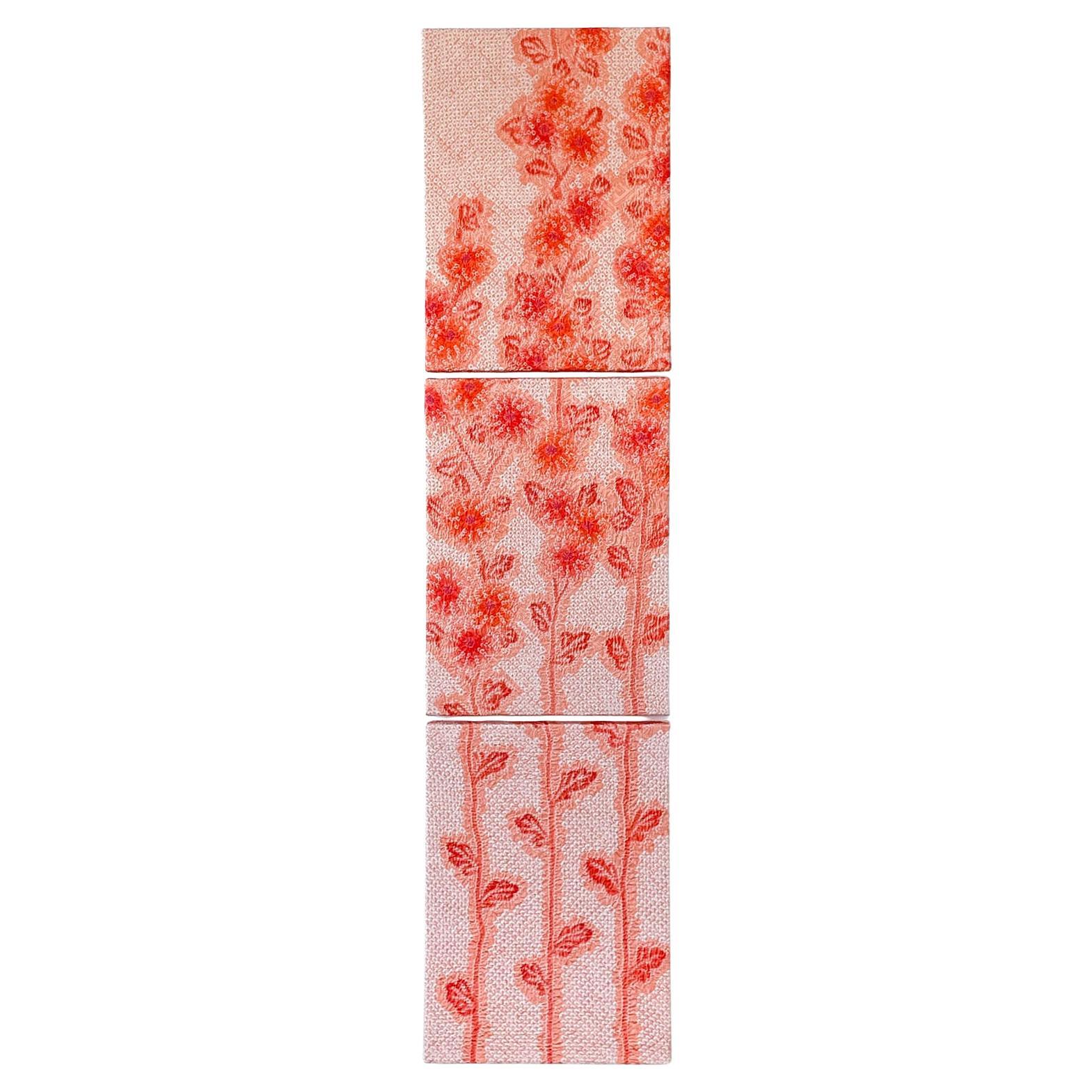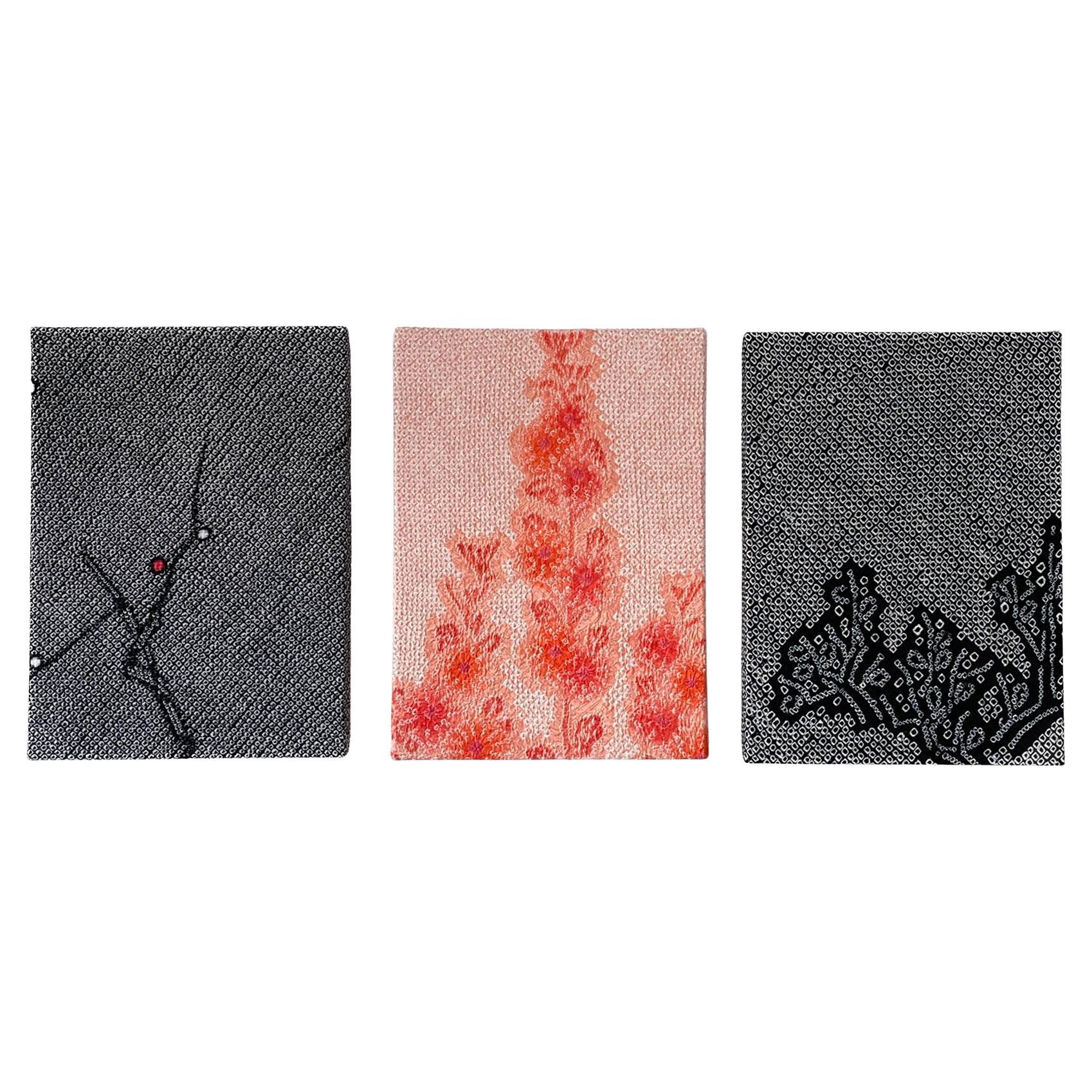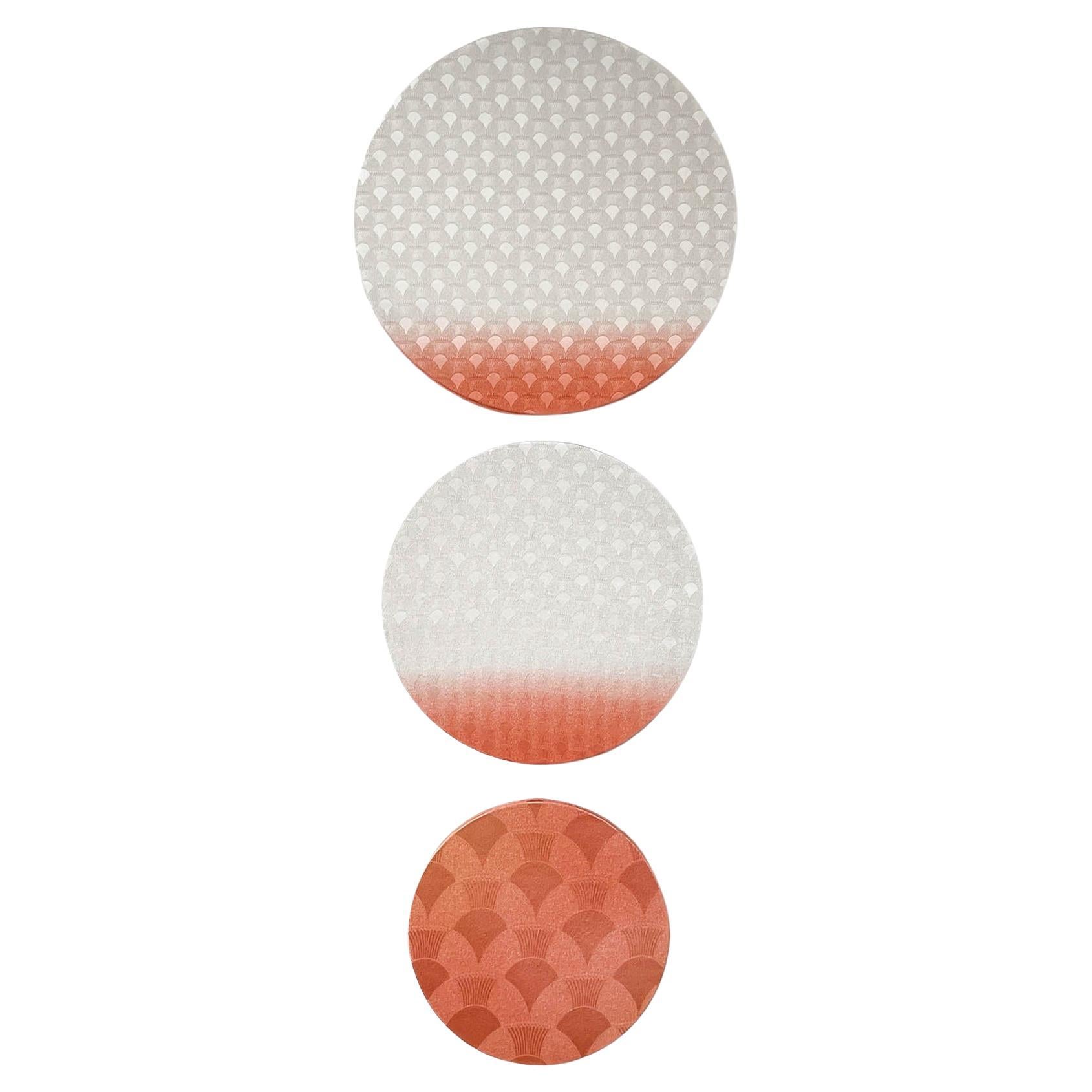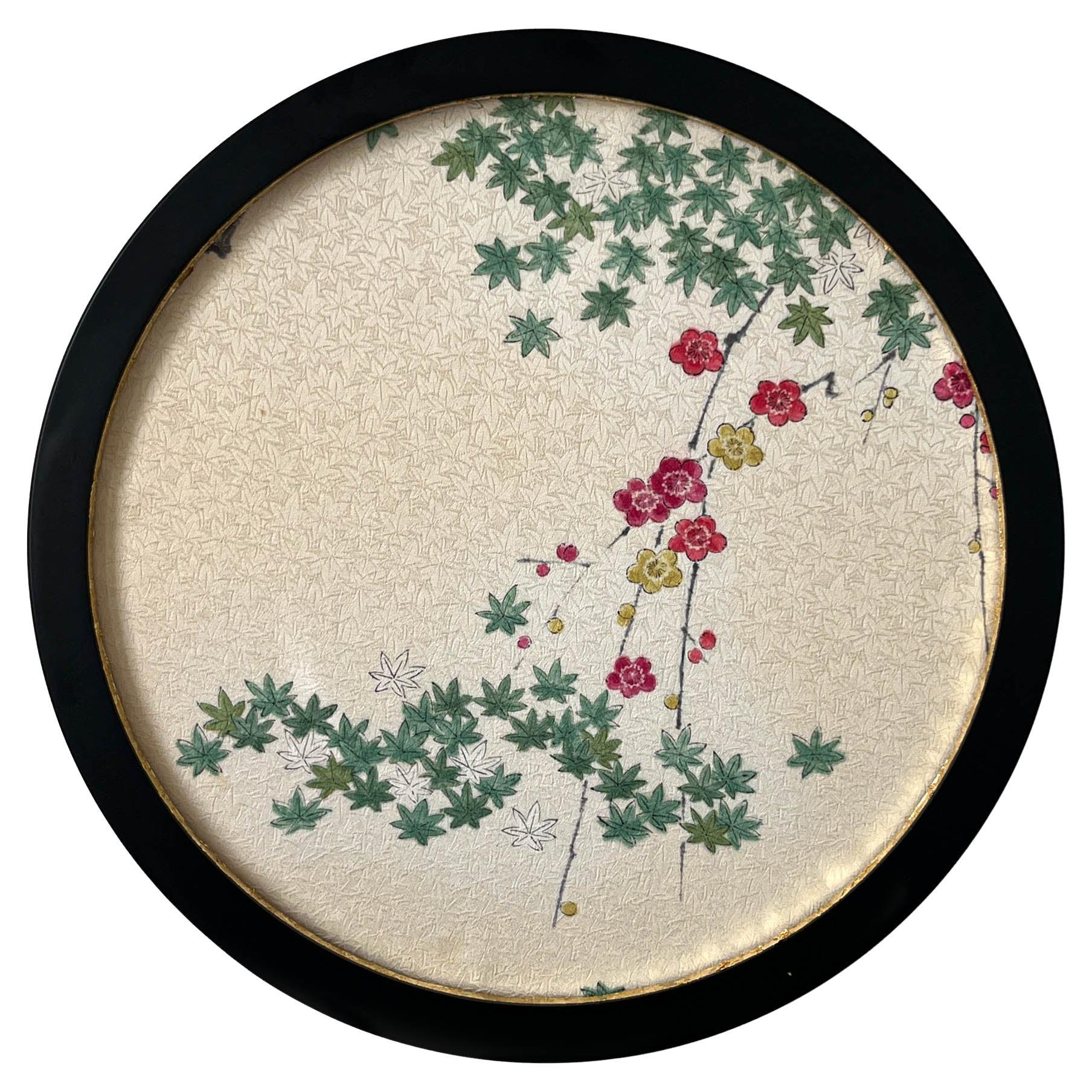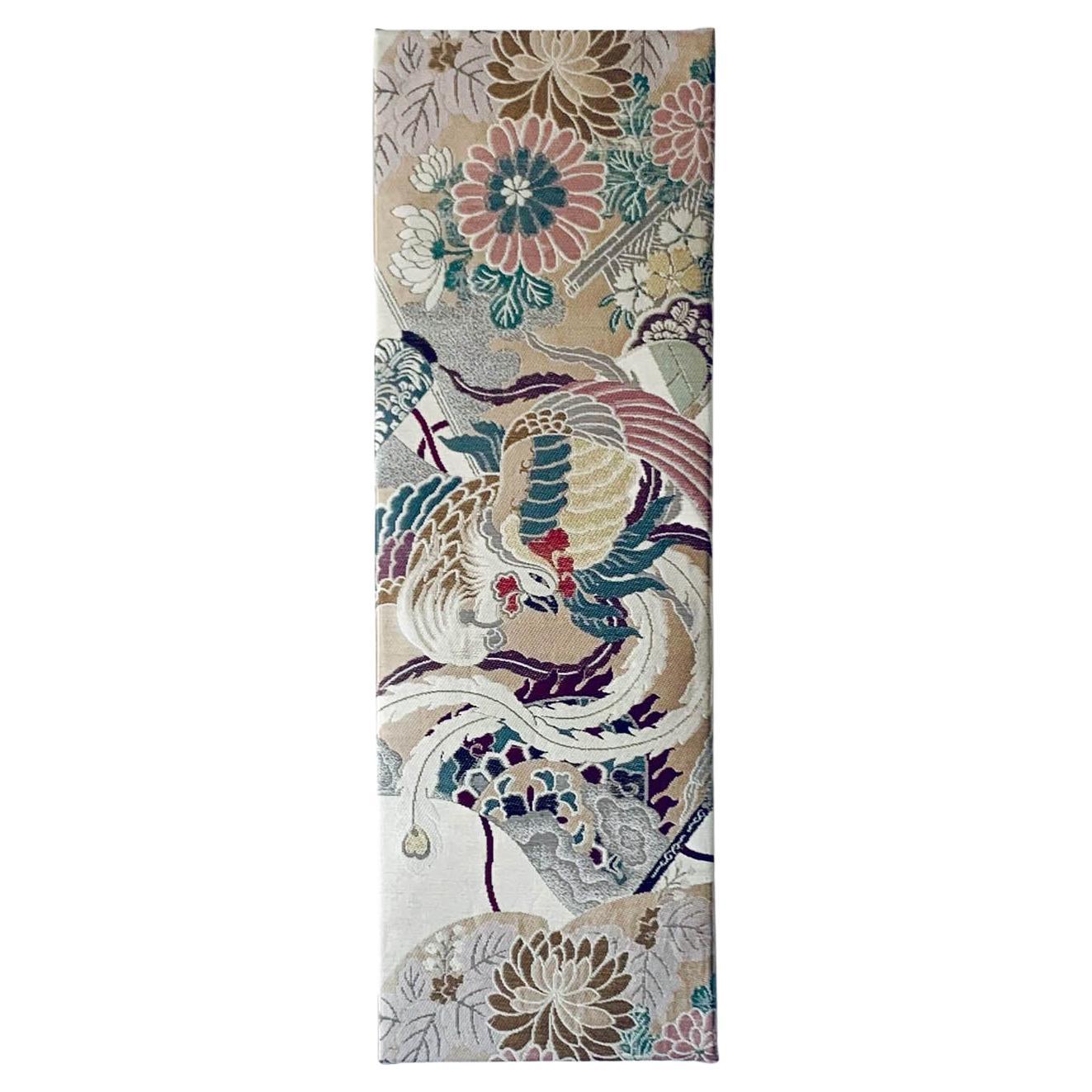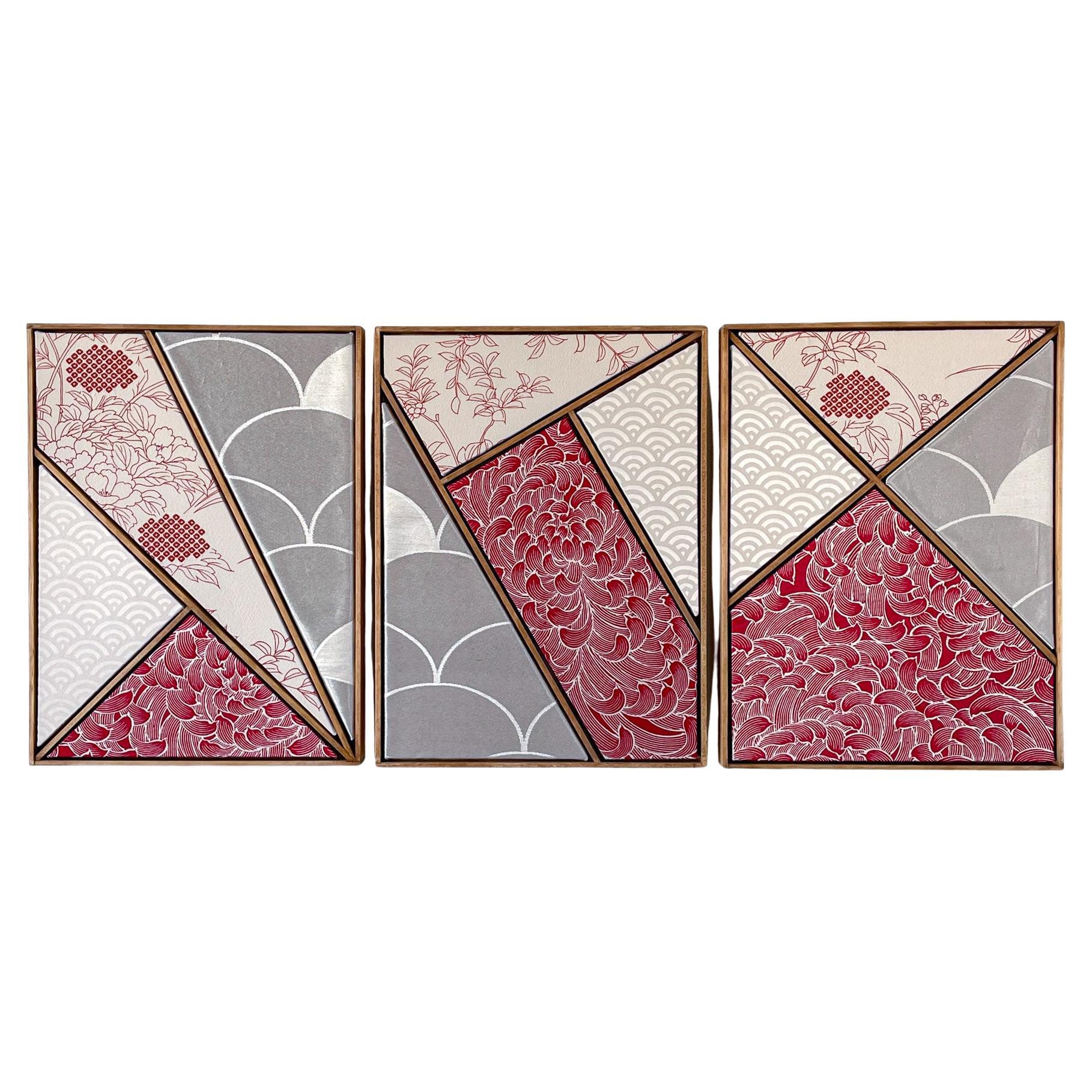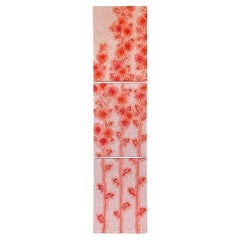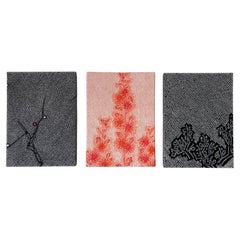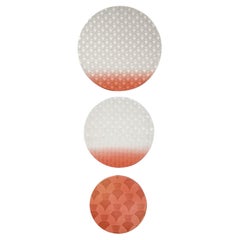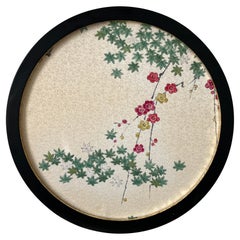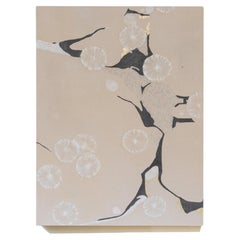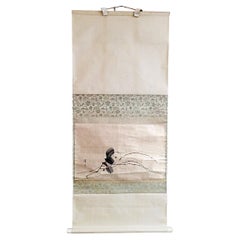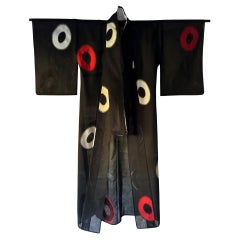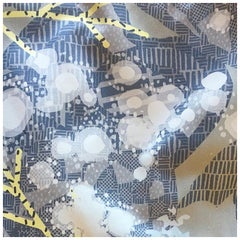Items Similar to Vintage kimono textile art "Snowflake ~New Beginnings~" by ikasu Purple, Japan
Want more images or videos?
Request additional images or videos from the seller
1 of 12
Vintage kimono textile art "Snowflake ~New Beginnings~" by ikasu Purple, Japan
$950
£726.33
€836.58
CA$1,331.24
A$1,486.21
CHF 778.75
MX$18,192.62
NOK 9,890.13
SEK 9,325.13
DKK 6,243.49
Shipping
Retrieving quote...The 1stDibs Promise:
Authenticity Guarantee,
Money-Back Guarantee,
24-Hour Cancellation
About the Item
Six canvases (Diameter approx. 30cm, 25cm, 20cm) use the fabric taken from antique kimono, its' various parts, to create one harmonious fluid image of a snowflake - a symbol of new beginnings in Japan.
<< Period / Story >>
The kimono used for this canvas was created during the late Showa period (1960-80ies).
<< Explanation and meaning of pattern and colors >>
In Japanese tradition, the snowflake motif (雪華, sekka) carries deep cultural symbolism. It represents purity, transience, and the fleeting nature of life. Snowflakes, with their delicate structure and short-lived beauty, align with the concept of mono no aware (物の哀れ), the Japanese aesthetic appreciation of the ephemeral nature of things. This concept reveres beauty in its impermanence, reflecting the Buddhist-inspired idea that all things are transient.
Snowflake patterns in art, kimono, and textiles are particularly popular in winter designs, symbolizing peace, serenity, and clarity. The symmetry and delicacy of snowflakes also embody a sense of elegance and refinement, qualities often admired in Japanese art and aesthetics. In traditional kimonos, the snowflake motif can add a touch of seasonal beauty and evoke feelings of quiet winter landscapes, enhancing the garment's connection to nature and the changing seasons.
<< Characteristics of the fabric >>
Shibori is a traditional Japanese dyeing technique that involves folding, twisting, binding, or stitching fabric before dyeing to create intricate patterns. This resist-dyeing method results in unique, organic designs, often characterized by soft, blurred edges and beautiful contrasts, commonly seen in indigo-blue hues.
Snowflakes and small plum flower buds are created by shibori dyeing here.
- Creator:Kimono ikasu (Artist)
- Dimensions:Height: 0.79 in (2 cm)Diameter: 11.82 in (30 cm)
- Style:Japonisme (In the Style Of)
- Materials and Techniques:
- Place of Origin:
- Period:
- Date of Manufacture:1970ies
- Condition:
- Seller Location:Setagaya City, JP
- Reference Number:1stDibs: LU10079243793552
About the Seller
No Reviews Yet
Vetted Professional Seller
Every seller passes strict standards for authenticity and reliability
1stDibs seller since 2024
- ShippingRetrieving quote...Shipping from: Setagaya City, Japan
- Return Policy
Authenticity Guarantee
In the unlikely event there’s an issue with an item’s authenticity, contact us within 1 year for a full refund. DetailsMoney-Back Guarantee
If your item is not as described, is damaged in transit, or does not arrive, contact us within 7 days for a full refund. Details24-Hour Cancellation
You have a 24-hour grace period in which to reconsider your purchase, with no questions asked.Vetted Professional Sellers
Our world-class sellers must adhere to strict standards for service and quality, maintaining the integrity of our listings.Price-Match Guarantee
If you find that a seller listed the same item for a lower price elsewhere, we’ll match it.Trusted Global Delivery
Our best-in-class carrier network provides specialized shipping options worldwide, including custom delivery.More From This Seller
View AllVintage kimono textile art " Growing ~ Longevity ~ " by ikasu Pink, Japan
By Kimono ikasu
Located in Setagaya City, JP
<< About this canvas >>
This set is a depiction of a tall chrysanthemum stem, entirely dyed in a traditional shibori technique.
<< Period / Story >>
The haori featured in this canvas was created and used during the late Showa period (1960-80ies).
<< Explanation and meaning of pattern and colors >>
A charming chrysanthemum flowers all around a stem seem to reach the heavens.
The chrysanthemum flower, which retains its vitality long after being cut, symbolizes longevity, purification from malevolent spirits, and good fortune. In ancient times, during the Kamakura period (1185-1333), emperors loved the chrysanthemum pattern, and it remains the most prestigious flower and the emblem of the Japanese imperial family...
Category
Vintage 1970s Japanese Japonisme Paintings and Screens
Materials
Canvas, Silk
Vintage kimono textile art "Flowers ~Life Circle~" by ikasu Pink, Black, Japan
By Kimono ikasu
Located in Setagaya City, JP
<< About this canvas >>
This canvas is crafted from three different haori fabrics, each adorned with a shibori dyeing flower motif going through entire fabric. These fabrics tell a ...
Category
Vintage 1970s Japanese Japonisme Paintings and Screens
Materials
Canvas, Silk
Vintage kimono textile art " Plum Gradation " by ikasu Pink, White, Japan
By Kimono ikasu
Located in Setagaya City, JP
This canvas featuring a plum color gradient kimono showcases a unique decorative variation of the popular seigaiha (青海波) sea waves pattern.
The artwork got a Mr. & Mrs. Abe Arts & Cu...
Category
Vintage 1980s Japanese Japonisme Paintings and Screens
Materials
Canvas, Silk
Vintage kimono textile art "View from the Window ~Maple&Plum~" by ikasu, Japan
By Kimono ikasu
Located in Setagaya City, JP
This work is a glorious nod to buddhist temples circle windows, with beautiful Japanese garden scape seen outside. Golden leaf on the border of a frame is an expression of light goin...
Category
Vintage 1930s Japanese Japonisme Paintings and Screens
Materials
Gold Leaf
Vintage obi textile art "From the Ashes ~Serendipity~" by ikasu Beige, Japan
By Kimono ikasu
Located in Setagaya City, JP
About This Canvas
This canvas has been upcycled from an early 20th-century maru-obi, featuring a subtle yet sophisticated depiction of the phoenix—a legendary symbol of peace and ren...
Category
Vintage 1910s Japanese Japonisme Decorative Art
Materials
Canvas, Silk
VIntage kimono textile art "Geometry ~Chrysanthemums" by ikasu, white, red Japan
By Kimono ikasu
Located in Setagaya City, JP
This work is inspired by traditional Japanese natural symbolism, and is framed in paulownia wood originally used for a kimono chest-of-drawers.
It is elegantly framed with paulownia...
Category
Vintage 1960s Japanese Japonisme Paintings and Screens
Materials
Silk, Wood
You May Also Like
Fabscarte Framework Hand Painted Wall Decor, Tender Flora
By Fabscarte
Located in Milan, IT
The Frameworks are created with the same technique as our wallcoverings and represent a unique artistic vision, which embellish the location where they are exhibited.
The creation c...
Category
2010s Italian Wallpaper
Materials
Paint, Paper
Silk Scroll Painting by Matsumura Keibun, 18th Century
By Matsumura Keibun
Located in New York, NY
A silk parchment scroll with a Camellia Flower painting, by Japanese artist Matsumura Keibun (1779-1843).
The younger half-brother to Matsumura Goshun, founder of the Shijo schoo...
Category
Antique 1790s Asian Edo Paintings and Screens
Materials
Silk, Parchment Paper
Vintage Japanese Gauze Kimono with Embroidery Modern Design
Located in Atlanta, GA
A Japanese formal Kimono made with a very fine black linen gauze augmented with applied modern circle pattern. The garment was hand-stitched and dated to circa 1930-50s. The black ga...
Category
Mid-20th Century Japanese Japonisme Textiles
Materials
Silk, Linen
"72 KŌ, Geishi Natsukarekusa karuru” Silk Panel by Ginette Caron/Masami Moriyama
By Midsummer Milano
Located in Milano, IT
According to the Japanese tradition, the year is divided into 24 periods and 72 kos (seasons), each one representing one of the small transitions that the Nature undergoes during a y...
Category
2010s Italian Modern Wallpaper
Materials
Silk, Wood
Antique Japanese Brocade Monk's Robe Kesa Meiji Period
Located in Atlanta, GA
A Japanese Kesa (Monk's Vestment) made from thirteen columns of patchworks of shimmering woven brocades. The elaborate motifs feature repetitive elaborat...
Category
Antique Late 19th Century Japanese Meiji Textiles
Materials
Brocade, Silk
Vintage Japanese Obi Textile, Mid-20th C
Located in Istanbul, TR
An obi in very good condition that can be utilized as a table runner, wall hanging.
Category
Mid-20th Century Japanese Pillows and Throws
Materials
Silk
More Ways To Browse
Textile Art
Vintage Textile Art
Woven Fabric Art
Japanese Fabric Art
Japanese Kimono
Japanese Used Kimono
Vintage Japanese Flower Art
Vintage Kimonos
Vintage Silk Screens
Blue Kimono
Indigo Vintage Textile
Small Asian Screens
Buddhist Flowers
Shibori
Fabric Folding Screen
Hand Painted Kimono
Japanese Kimono Fabric
Japanese Silk Art Landscape
